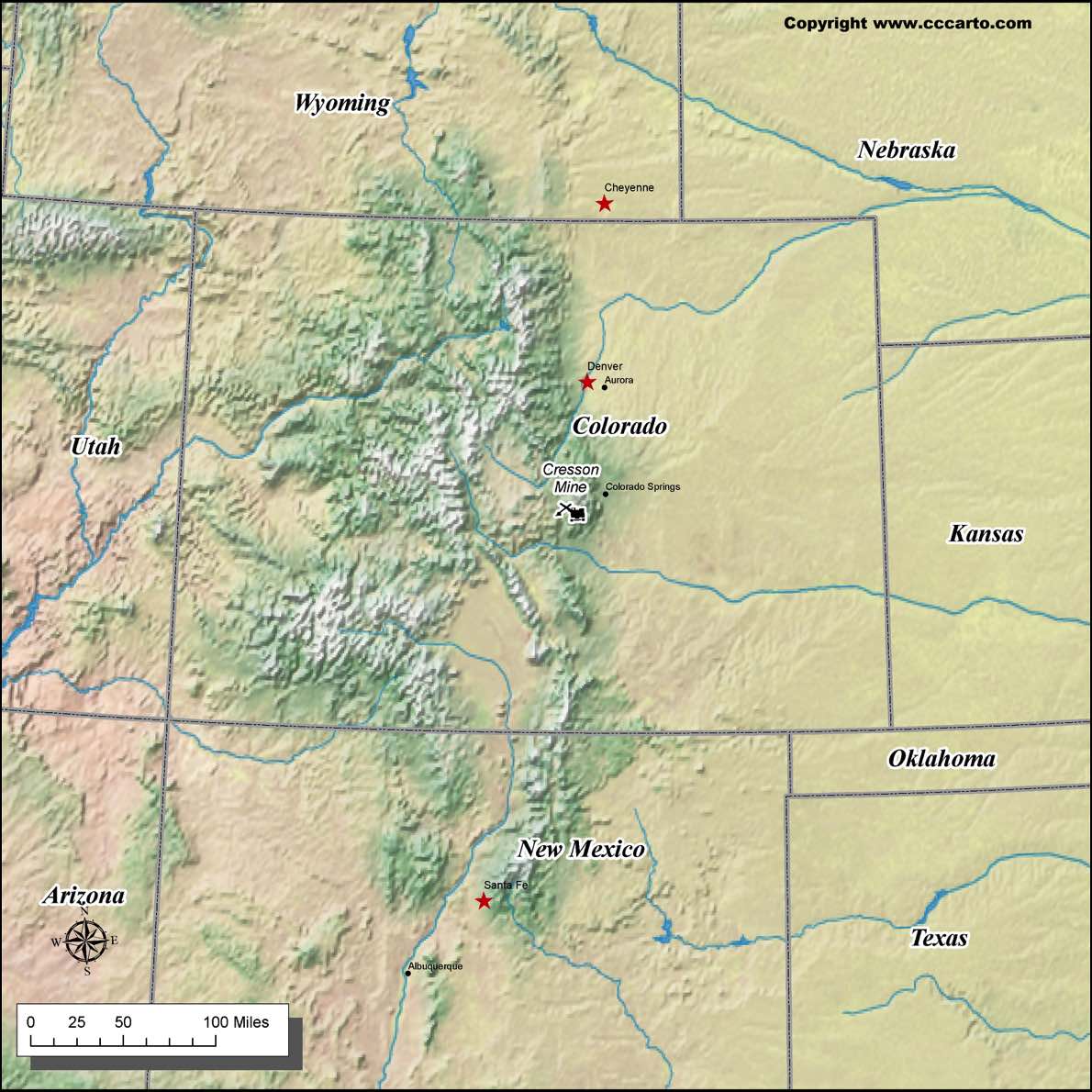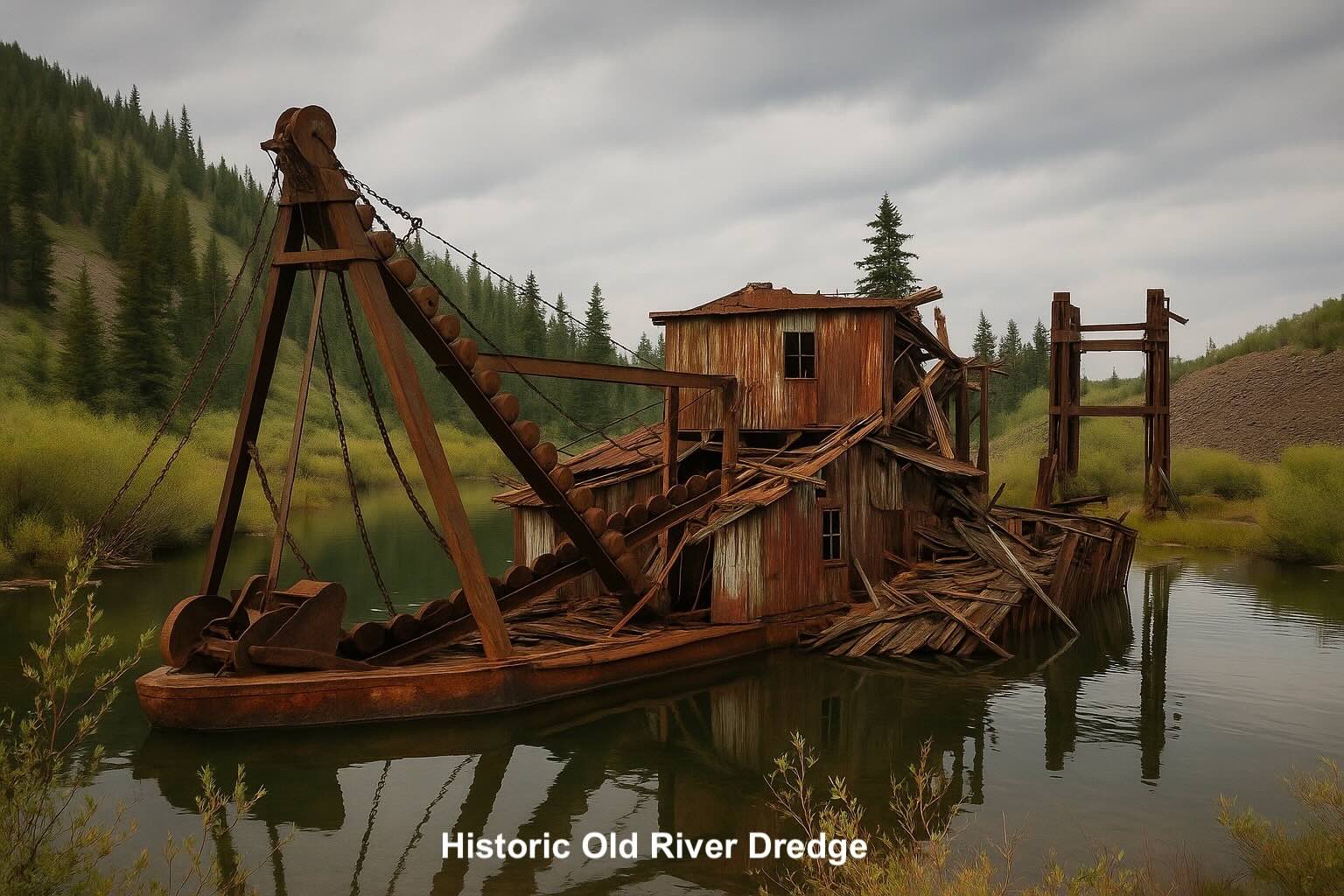
Colorado Goldmines
Early gold mining in Colorado was dominated by individuals rather than corporations, with prospectors staking claims and working small plots of land. These early miners employed methods such as panning, sluicing, and rocker boxes, which were suitable for extracting gold from surface deposits and riverbeds. However, as the easily accessible gold was quickly exhausted, the nature of mining began to evolve. By the early 1860s, larger operations began to take over, and mining companies introduced more advanced and capital-intensive methods.
The most productive areas for gold mining in Colorado were centered around the Rocky Mountains. Notable gold-producing regions include the Central City–Idaho Springs district, Leadville, Cripple Creek, and Breckenridge. The Central City–Idaho Springs district, often called the "Richest Square Mile on Earth," became the epicenter of Colorado's early boom. Cripple Creek, discovered by Bob Womack in 1890, marked Colorado’s last great gold rush and became the most productive gold mining area in the state thanks to technological innovations like the cyanide leaching process.
Abandoned Gold Mining Towns
Gold booms gave rise to dozens of mining camps that quickly grew into thriving towns. When the ore was exhausted or prices collapsed, many were abandoned, leaving behind ghost towns that dot the Colorado high country today. Among the best-known are:
• St. Elmo – Once a bustling supply town with saloons, hotels, and a telegraph office, abandoned when mines closed in the early 20th century.
• Independence – Near Aspen, founded in 1879 and abandoned by 1912, its cabins still cling to the windy pass that shares its name.
• Goldfield and Victor – Built during the Cripple Creek rush, Victor survives, but many nearby camps faded into ruins.
• Caribou – Near Nederland, once famous for both gold and silver, today only stone ruins remain.
These ghost towns stand as reminders of the volatility of mining economies and the hardships of frontier life.
River Dredging and Its Impact
Beginning in the late 19th century, Colorado saw widespread use of massive floating dredges to rework riverbeds for fine gold. Areas like Breckenridge, Fairplay, and the upper Arkansas River were scarred by these mechanical behemoths. The dredges churned through river gravels, leaving behind towering tailing piles and reshaped floodplains that remain visible today. While efficient at recovering gold missed by earlier prospectors, dredging destroyed aquatic habitats, diverted river channels, and left barren landscapes. By the mid-20th century, most dredges ceased operation as costs rose and deposits were exhausted, leaving behind abandoned hulks and altered waterways that still define many valleys.

Narrow-Gauge Railroads and the Mining Industry
To connect remote mountain mines with smelters and markets, Colorado developed one of the most extensive networks of narrow-gauge railroads in the world. Companies such as the Denver & Rio Grande, Colorado & Southern, and Florence & Cripple Creek built twisting mountain routes that hauled ore, coal, timber, and supplies. The narrow gauge (three feet wide) allowed for sharper curves and cheaper construction in rugged terrain. Rail lines reached nearly every major mining district: Silverton, Ouray, Leadville, and Cripple Creek all depended on them. Though many lines were abandoned by the mid-20th century as highways replaced rail, portions survive today as historic tourist routes, such as the Durango & Silverton Narrow Gauge Railroad and the Cumbres & Toltec Scenic Railroad, preserving the legacy of the mining era.
Environmental and Cultural Legacy
Mining left deep scars: abandoned drifts and shafts, mercury- and cyanide-tainted tailings, and river systems disrupted by dredging. Yet, it also created the foundation for many Colorado communities, shaping the state’s cultural identity and economy. From ghost towns to preserved railroads, Colorado’s gold mining past continues to attract tourists, historians, and adventurers, ensuring that the story of boom, bust, and transformation endures.
Source: U.S. Geological Survey, Major mineral deposits of the world, Open-File Report 2005-1294. Data portal